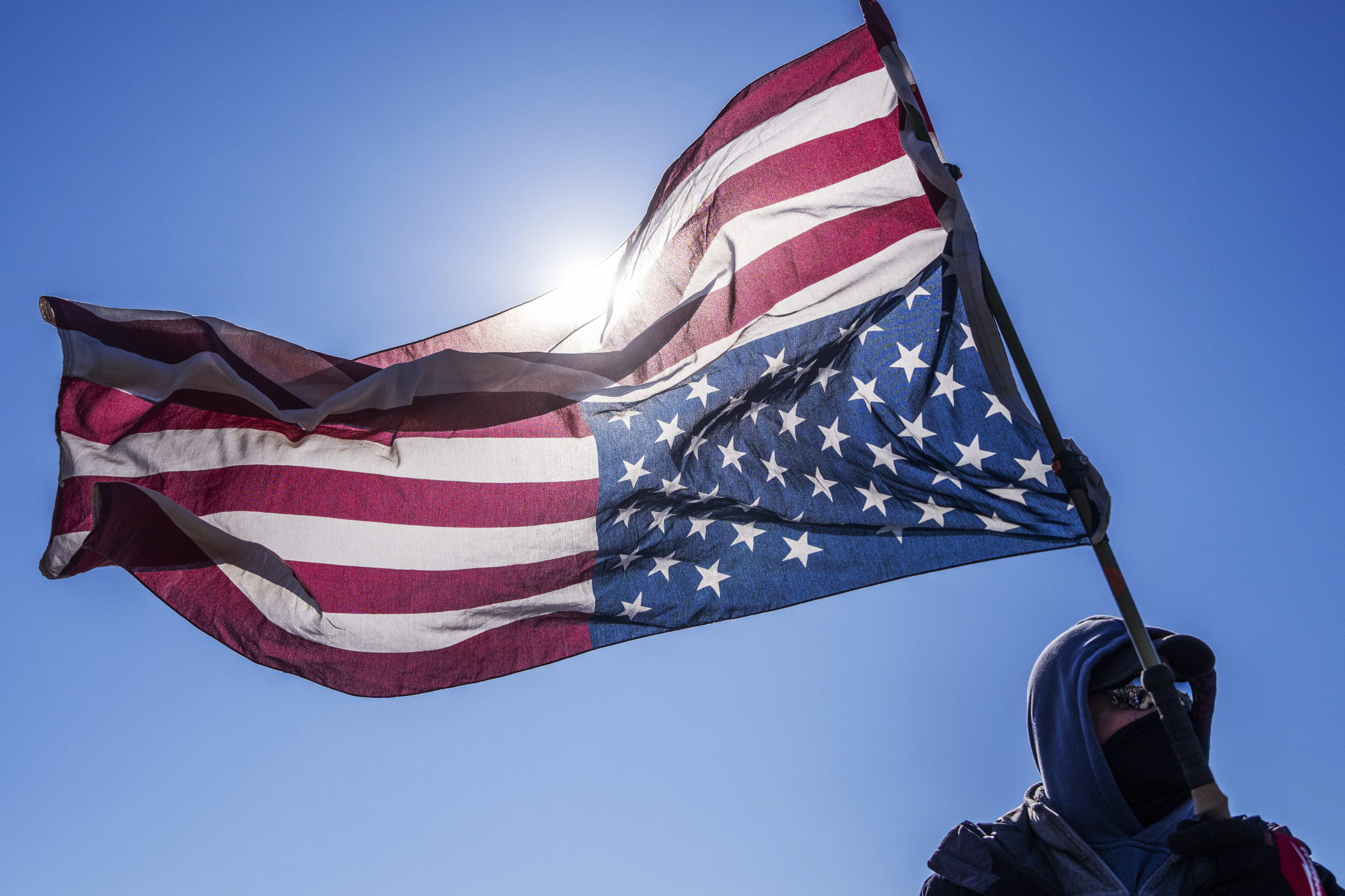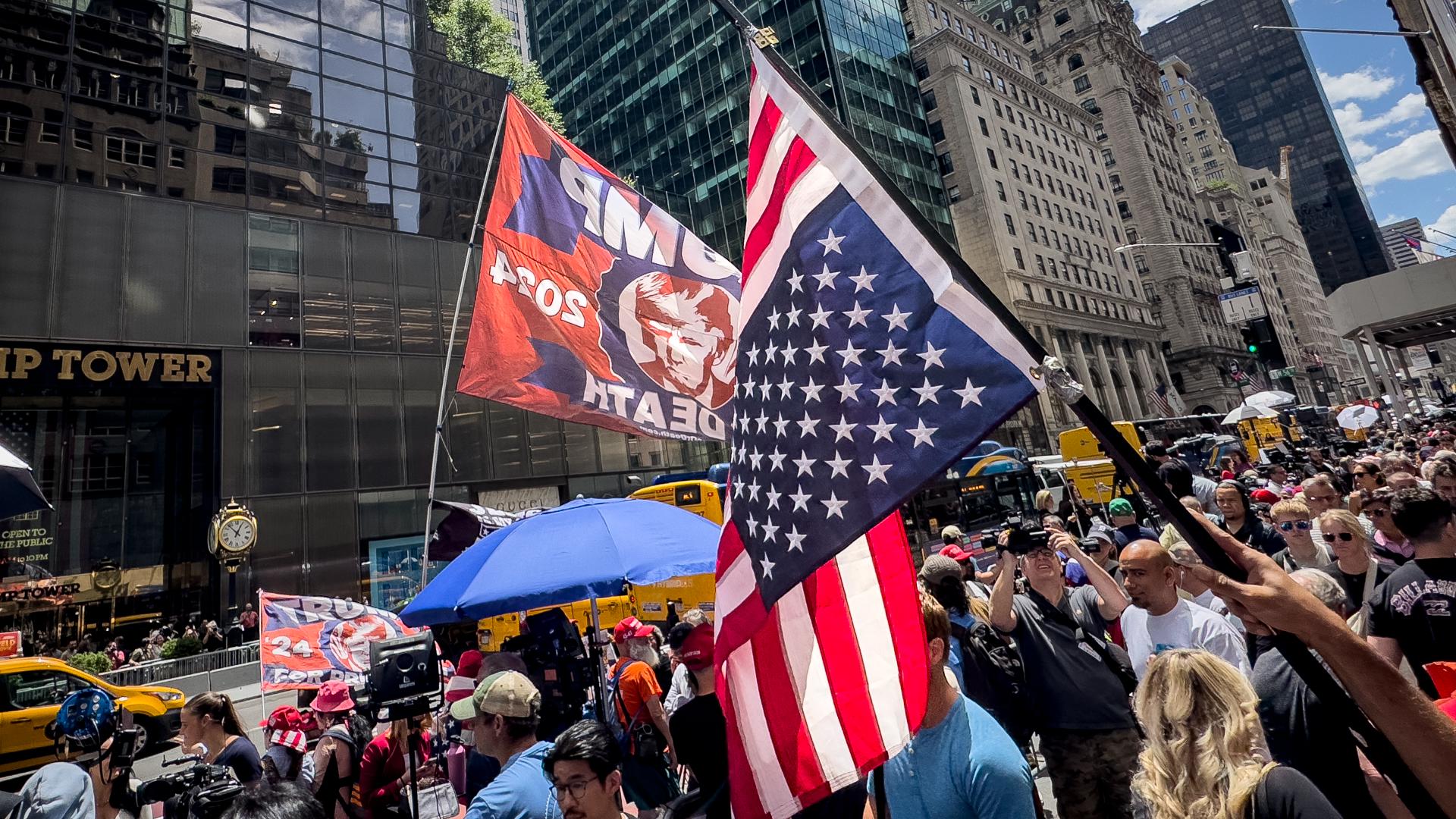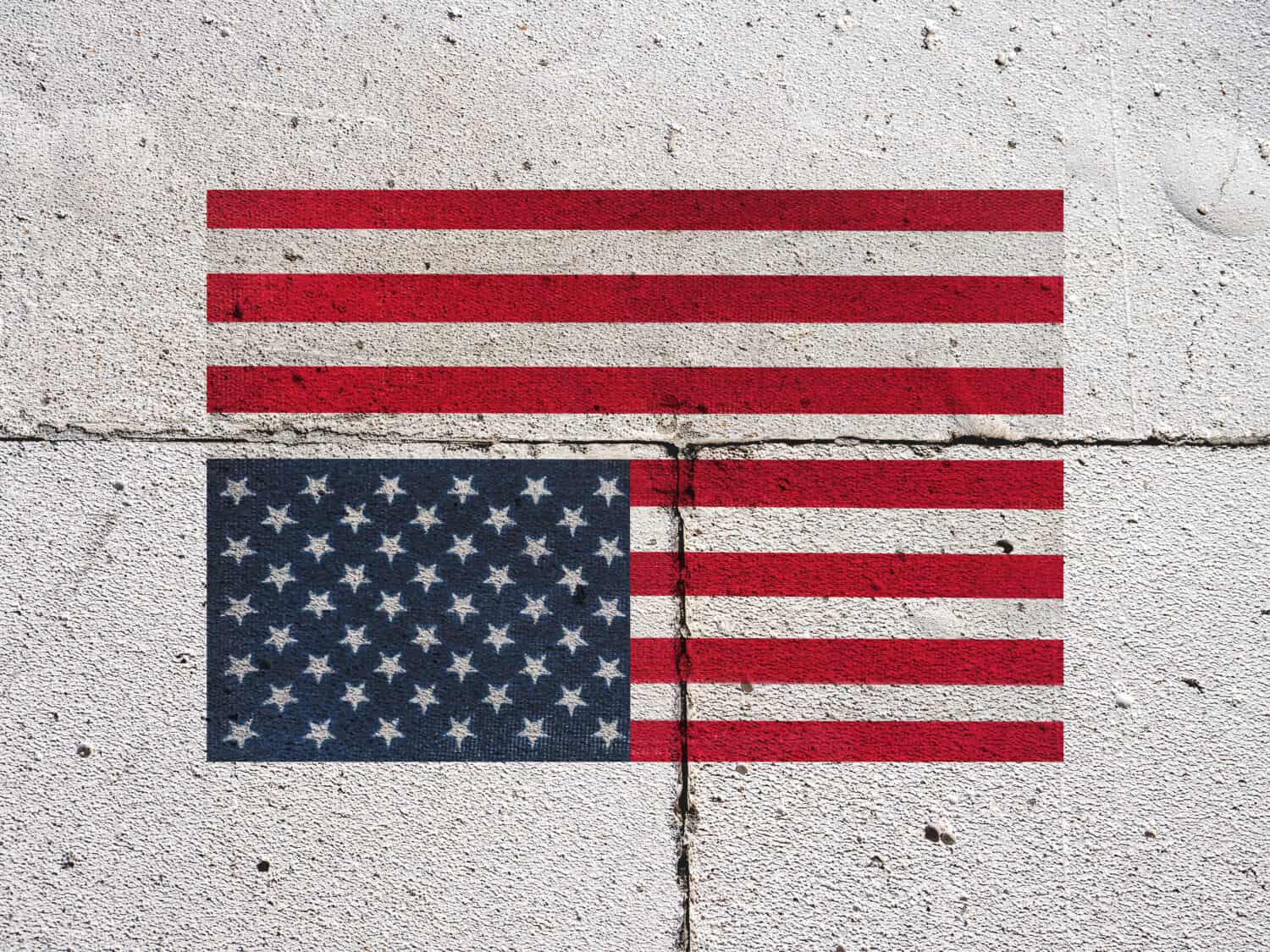The True Meaning Of An Upside Down American Flag
The American flag, a powerful emblem of liberty and national identity, holds a myriad of meanings depending on its display. While typically flown upright as a symbol of pride and unity, encountering an upside down American flag can be startling and often prompts questions about its significance. Far from being a simple mistake or an act of disrespect, understanding the meaning of an upside down American flag reveals a profound and historically rooted form of communication. This inverted display carries a weight of symbolism, primarily signaling distress, but it has also evolved into a potent form of protected protest, reflecting urgent national issues and promoting crucial dialogue.
This article delves into the rich history and multifaceted interpretations of the upside down flag, exploring its origins as a distress signal and its transformation into a powerful tool for dissent. We will examine how this symbol has been used throughout American history, from maritime emergencies to significant moments of civil unrest and political protest, highlighting its protection under the First Amendment. By understanding the historical context, the U.S. Flag Code guidelines, and contemporary applications, we can better appreciate the deep symbolic gestures associated with this inverted display and engage more thoughtfully with its profound message.
Understanding the Upside Down Flag: More Than a Mistake
When one observes an American flag flying upside down, it's natural to question its intent. Is it a mistake? Is it disrespectful? The answer is far more complex and steeped in tradition and constitutional rights. The upside down version of the American flag is considered a peaceful form of protest, but its origins are rooted in a more urgent context. It represents that the country is in distress and heading in the wrong direction. This symbolism isn't new; it has represented various causes and sentiments over the country's history. Understanding the history and the meaning of an upside down American flag helps us appreciate the deep symbolic gestures associated with this powerful national emblem. It is a visual cry for help, a signal that something is profoundly wrong, or a powerful statement of dissent against perceived injustices or governmental actions.Historical Roots: The Distress Signal
The primary and original meaning of an upside down American flag is as a signal of dire distress. This tradition dates back centuries, long before the United States even existed as a nation. It's a universal maritime signal, recognized globally, indicating an emergency and an urgent need for assistance.Maritime Origins and "Extreme Danger"
The practice of inverting a nation's flag as a distress signal originates from naval and maritime traditions. When a ship was in peril – under attack, sinking, or facing an extreme emergency – flying its flag upside down was a universally understood plea for help. This visual cue communicated to any nearby vessels or land-based observers that the crew and ship were in "extreme danger to life or property" and required immediate aid. People may fly their flag upside down to signify their distress and urgent need for medical care and supplies. Flying the flag upside down signals to the proper authorities that assistance is needed, making it a critical communication tool in life-threatening situations. The criterion of extreme danger to life or property is still up to interpretation, however, which allows for broader application beyond just physical peril.Early Interpretations and the Flag Code
The U.S. Flag Code, a sweeping set of guidelines that dictates the appearance and display of the U.S. flag, acknowledges this specific use. Section 8(a) of the Flag Code states: "The flag should never be displayed with the union down, except as a signal of dire distress in instances of extreme danger to life or property." While the Flag Code permits inverted flag displays only in cases of "extreme danger to life or property," it notably lacks legal enforcement. This means that while flying the American flag upside down violates the U.S. Flag Code in a technical sense if not for dire distress, there are no criminal penalties for doing so. This lack of legal enforcement is crucial, as it opens the door for other interpretations and uses, particularly as a form of protest. The phrase "extreme danger to life or property" has been interpreted broadly over time, extending beyond literal sinking ships to metaphorical dangers to the nation's foundational principles or its citizens' well-being.The Upside Down Flag as a Form of Protest
Beyond its traditional role as a distress signal, the meaning of an upside down American flag has evolved significantly, becoming a powerful symbol of dissent and protest. This transformation is deeply intertwined with the history of social and political movements in the United States.A Symbol of Dissent in American History
Historically, the upside down flag has been used to protest presidential administrations and Supreme Court decisions. It serves as a visual declaration that the country, in the eyes of the person displaying the flag, is in distress and heading in the wrong direction. This symbolic act allows individuals to express profound disagreement or alarm regarding government policies, societal issues, or perceived threats to democratic values. For instance, during the Civil Rights Movement, some protestors used the inverted flag to signal the "distress" of racial inequality and injustice. Similarly, during the Vietnam War era, it became a symbol for those who believed the nation was in a moral and political crisis. Communities experiencing civil unrest can fly the flag upside down to bring attention to the issues at hand, highlighting systemic problems or urgent calls for change.Landmark Cases and First Amendment Protection
The use of the American flag, even in controversial ways, as a form of expression is largely protected by the First Amendment of the U.S. Constitution, which guarantees freedom of speech. The Supreme Court has repeatedly affirmed that symbolic acts, including flag display and desecration, fall under this protection. In a landmark ruling, the court decreed that displaying an upside down flag was a form of protected First Amendment speech. This legal precedent is why contemporary protestors have taken to displaying American flags upside down. The headlines have said it all lately, reflecting a growing understanding and acceptance of this form of protest. This protection underscores the idea that even expressions that some find offensive are vital to a robust democracy, allowing citizens to voice their grievances without fear of legal reprisal. The Supreme Court's stance has solidified the upside down flag's role not just as a distress signal, but as a legitimate and recognized form of political expression.Contemporary Use: Reflecting National Unrest
In recent years, the meaning of an upside down American flag has gained renewed prominence, reflecting heightened political polarization and national unrest. This symbol is increasingly seen in various contexts, from individual homes to large-scale demonstrations, as citizens express deep concerns about the state of the nation. The rise of social media and instant communication has amplified the visibility and impact of such symbolic gestures. What might have once been a local act of protest can now quickly spread nationwide, sparking debate and drawing attention to specific issues. The inverted flag serves as a powerful, non-verbal statement, immediately conveying a sense of alarm or profound disagreement without needing lengthy explanations. It resonates deeply with those who feel that the country is facing existential threats, whether political, social, or economic. This contemporary usage highlights a collective anxiety and a desire for fundamental change, making the upside down flag a poignant barometer of public sentiment.Case Studies: When the Flag Flies Inverted
To truly grasp the versatile meaning of an upside down American flag, it's helpful to look at specific instances where it has been displayed. These examples illustrate the diverse motivations behind its use, from direct political opposition to broader expressions of societal distress.Protesting Presidential Administrations and SCOTUS Decisions
Throughout history, the inverted flag has been a visible sign of opposition to government policies. For instance, during periods of unpopular wars or contentious legislative actions, citizens have flown the flag upside down to express their dismay with presidential administrations. More recently, the symbol has been prominently used to protest Supreme Court decisions that have ignited widespread public anger. Following the Supreme Court's decision to overturn Roe v. Wade, hundreds of protestors took to the street to protest against the court's decision. Among the sea of signs and chants, many displayed the American flag upside down, signaling their belief that the nation was in a state of profound distress regarding reproductive rights. This direct correlation between a significant political event and the display of an inverted flag clearly demonstrates its function as a powerful protest tool. It signifies a belief that fundamental rights are under attack, or that the nation's moral compass has gone awry.The January 6th Insurrection and Recent Debates
The January 6th, 2021 insurrection at the U.S. Capitol marked a highly contentious moment in American history, and in its wake, the symbolism of the upside down flag gained renewed scrutiny. The New York Times reported that a flag was flown upside down at the home of a U.S. Supreme Court Justice, sparking intense public debate. This particular instance brought the discussion of the upside down flag's meaning into mainstream headlines, forcing a national conversation about its implications. Was it a signal of distress for the nation's political state, a form of protest against the outcome of an election, or something else entirely? The incident highlighted the complexity of interpreting the symbol, especially when displayed by figures in positions of power. It underscored how the same symbol can be interpreted differently depending on the context and the observer's political leanings, yet its core message of distress or dissent remains.Navigating the Nuances: Distress vs. Dissent
While the original intent of an upside down flag was purely as a distress signal, its evolution into a form of protest has created a nuanced interpretation. It's important to differentiate between these two primary meanings to fully grasp the message being conveyed. When someone flies the flag upside down due to a literal, immediate danger to life or property – a natural disaster like Hurricane Katrina, a house fire, or a medical emergency – the intent is clear: an urgent call for help. This is the traditional, universally recognized meaning. However, when the flag is inverted in a political context, it shifts to a symbolic distress. Here, the "danger" is not physical but ideological, political, or social. It represents a belief that the nation's principles, its direction, or its governance are in peril. This form of protest, while peaceful, is a powerful declaration that the individual or group feels the country is experiencing a profound crisis, heading in the wrong direction, and that urgent attention and change are needed. The distinction lies in the nature of the "distress" – literal physical peril versus metaphorical national peril. Both, however, share the core idea of an urgent need for intervention or change.Respect, Patriotism, and the Power of Symbolism
The display of an upside down American flag often sparks strong reactions, ranging from understanding and solidarity to outrage and accusations of disrespect. This tension arises from differing views on patriotism and the proper way to honor national symbols. For many, the flag represents the unity, sacrifice, and ideals of the nation, and any deviation from its prescribed display can be seen as an affront. However, for those who choose to fly it inverted as a protest, the act itself is often deeply patriotic. They are not rejecting the nation, but rather expressing profound concern for its current state, believing that by highlighting its perceived distress, they are working to uphold its true values. The power of the American flag as a symbol lies precisely in its ability to evoke such strong emotions and represent diverse viewpoints. While it can be a distress signal or a form of protest, displaying the flag correctly according to the Flag Code remains a profound expression of respect and patriotism for many. Yet, the very act of inverting it, when done with a clear intent to signal distress or dissent, is also a testament to the freedoms the flag represents. It is a powerful, non-verbal statement that, in a nation founded on the principles of free speech, allows citizens to voice their deepest concerns about the country's direction. The controversy itself highlights the flag's enduring significance as a living symbol, constantly interpreted and reinterpreted by its citizens.Engaging Thoughtfully with the Upside Down Flag
Given the complex and often contentious nature of its symbolism, engaging thoughtfully with the meaning of an upside down American flag requires a nuanced approach. It's crucial to move beyond immediate emotional reactions and seek to understand the underlying message. First, individuals should educate themselves on flag protocols, including the U.S. Flag Code and its interpretations. This knowledge provides a foundation for understanding both the traditional uses and the protected forms of expression. Second, it's important to consider the context in which the flag is displayed. Is it in response to a natural disaster, a political event, or a personal crisis? The surrounding circumstances often provide vital clues to the intent behind the inverted display. Third, and perhaps most importantly, individuals should participate respectfully within appropriate forums when discussing such symbols. This means engaging in civil discourse, listening to differing perspectives, and acknowledging the validity of varied interpretations. Whether one agrees or disagrees with the message, recognizing the display of an upside down flag as a form of protected speech is fundamental to upholding democratic values. By fostering informed discussion rather than immediate condemnation, we can better appreciate the depth of meaning associated with this powerful national symbol and its role in reflecting the ongoing narrative of the United States.Conclusion
The meaning of an upside down American flag is far richer and more complex than a mere visual anomaly. It is a symbol steeped in history, originating as a universal signal of dire distress, a desperate plea for help in moments of extreme danger to life or property. Over time, however, its symbolism has expanded significantly, evolving into a potent and constitutionally protected form of protest. From signaling national peril during times of civil unrest to expressing profound dissent against specific governmental actions or Supreme Court decisions, the inverted flag has become a powerful visual declaration that the country is perceived to be in crisis or heading in the wrong direction. While the U.S. Flag Code outlines its use strictly for distress, the lack of legal enforcement and the robust protection of the First Amendment have cemented its role as a legitimate tool for free speech. This dual meaning—distress and dissent—underscores the flag's enduring power as a living symbol, capable of reflecting the hopes, fears, and frustrations of a diverse nation. Understanding this profound symbolism allows us to engage more thoughtfully with its display, fostering informed dialogue rather than immediate judgment. We encourage you to continue exploring the rich tapestry of American history and symbolism. What are your thoughts on the evolving meaning of the upside down American flag? Share your perspectives in the comments below, and consider sharing this article to promote a deeper understanding of this powerful national emblem.
Upside-Down US Flag Meaning: 'Distress' Signal Seen Flying Across the

What does the upside-down American flag mean? | krem.com

Upside Down American Flag: History, Meaning, and Symbolism - AZ Animals